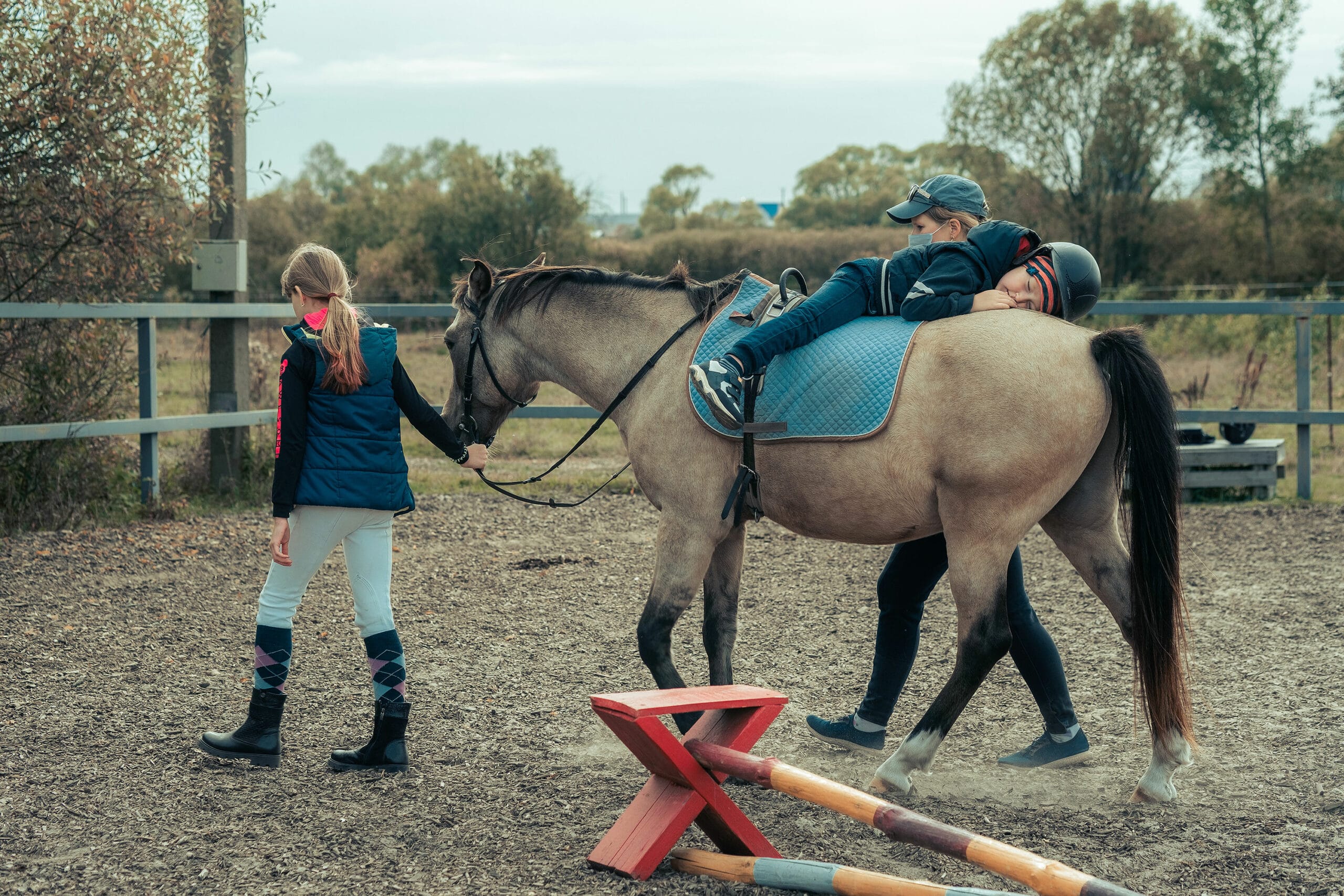So, you’re interested in horseback riding for therapeutic purposes? Well, you’ve come to the right place! At “http://horsebackridingdude.com/”, we’ve got all the information you need about this amazing activity. Our blog is dedicated to providing comprehensive and engaging content that covers various aspects of horseback riding from different perspectives.
In our upcoming articles, you’ll learn more about the benefits of horseback riding for therapy and how it can positively impact both physical and mental well-being. We’ll delve into the different techniques used, share personal stories from riders who have found solace in the saddle, and provide tips for getting started with this therapeutic practice. Stay tuned because we’ve got some great posts lined up for you!
Horseback Riding for Therapeutic Purposes
Horseback riding is not only a recreational activity but also has therapeutic benefits for individuals with physical, emotional, or cognitive disabilities. This article will provide an overview of horseback riding for therapeutic purposes, explore the physical and psychological benefits it offers, discuss different therapeutic techniques used, highlight safety precautions, and provide information on qualifications for instructors. We will also cover considerations for selecting a therapeutic horseback riding program, share success stories and testimonials, discuss costs and funding options, review research supporting its effectiveness, and touch on the importance of inclusion and accessibility. So, let’s saddle up and dive into the world of therapeutic horseback riding!
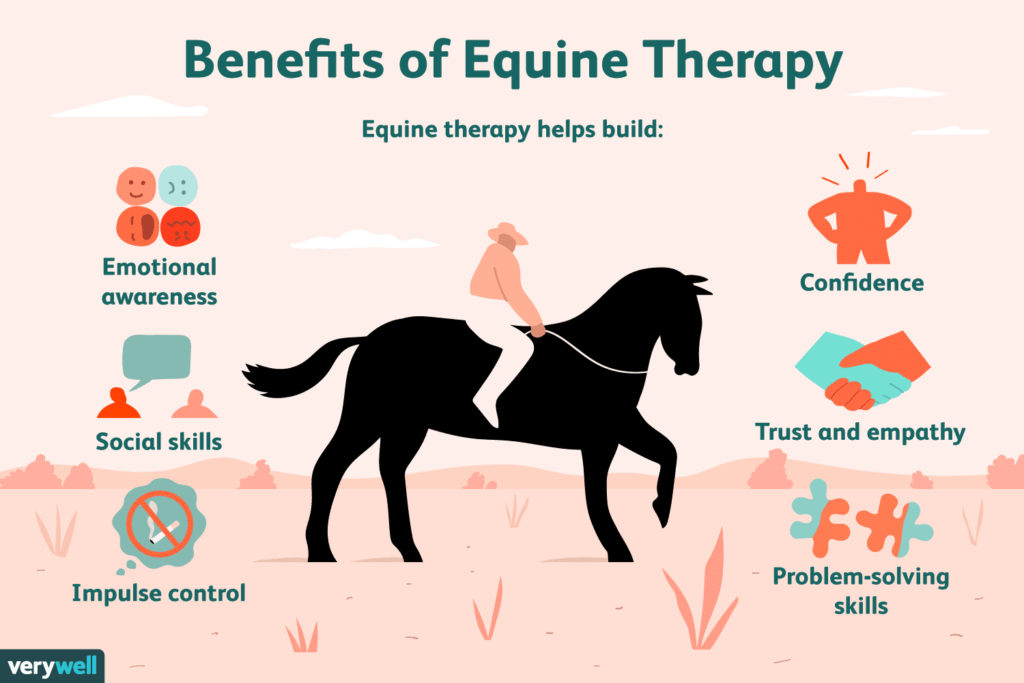
Overview of Horseback Riding for Therapeutic Purposes
What is horseback riding for therapeutic purposes?
Horseback riding for therapeutic purposes, also known as equine-assisted therapy, involves using horses to provide physical, psychological, and social benefits to individuals with disabilities. The interaction between humans and horses during these sessions can help improve various aspects of well-being, including physical strength, balance, self-confidence, and emotional well-being.
Benefits of horseback riding for therapy
Therapeutic horseback riding offers numerous benefits for individuals with disabilities. It can help improve balance, coordination, strength, flexibility, and range of motion. Additionally, it aids in postural control, enhances cardiovascular fitness, boosts self-confidence and self-esteem, reduces anxiety and stress, promotes relaxation and mindfulness, and enhances social interaction and communication skills.
Types of therapeutic horseback riding programs
There are different types of therapeutic horseback riding programs tailored to the specific needs and abilities of individuals. These include equine-assisted activities and therapies, hippotherapy, therapeutic horseback riding with a certified instructor, and mounted exercises and games. Each program focuses on different aspects of therapy and uses horses as a powerful tool for rehabilitation and personal growth.
Goals of therapeutic horseback riding
The primary goals of therapeutic horseback riding vary depending on the individual’s needs and abilities. They can range from improving physical strength, coordination, and balance to enhancing emotional well-being, self-esteem, and social skills. Therapeutic horseback riding aims to enhance the overall quality of life for individuals with disabilities by addressing their specific challenges and goals.
Physical Benefits of Horseback Riding for Therapy
Improving balance and coordination
Horseback riding requires constant adjustments to maintain balance, which helps individuals improve their overall balance and coordination skills. The horse’s rhythmic movement stimulates the rider’s vestibular system and challenges their body to maintain stability.
Strengthening muscles
The act of riding a horse engages various muscle groups, including the core, legs, and arms. Regular therapeutic horseback riding sessions can help strengthen these muscles over time, leading to increased overall strength and improved posture.
Increasing flexibility and range of motion
The horse’s movement, particularly its natural four-beat walking gait, helps to gently stretch and mobilize the rider’s muscles and joints. This repetitive motion promotes increased flexibility and range of motion, making therapeutic horseback riding a valuable activity for individuals with limited mobility.
Aiding in postural control
Riding a horse requires the rider to maintain an upright and balanced posture. The horse’s movements challenge the rider’s postural control, helping them develop core strength, stability, and proper alignment.
Enhancing cardiovascular fitness
Horseback riding is a physically demanding activity that can help improve cardiovascular fitness. The rhythmic motion and physical exertion involved in riding can elevate heart rate and provide a cardiovascular workout, benefiting individuals with conditions such as asthma or limited aerobic capacity.
Psychological Benefits of Horseback Riding for Therapy
Boosting self-confidence and self-esteem
Interacting with horses and successfully riding them can greatly boost an individual’s self-confidence and self-esteem. Horses are non-judgmental and provide a sense of accomplishment, empowering individuals to overcome challenges and develop a positive self-image.
Reducing anxiety and stress
Spending time with horses in a peaceful and natural environment can have a calming effect on individuals. The bond between humans and horses, combined with the rhythmic motion of riding, can reduce anxiety and stress levels, promoting relaxation and emotional well-being.
Promoting relaxation and mindfulness
Horseback riding requires focus and concentration, redirecting attention away from daily stressors and promoting a state of mindfulness. The quiet and serene nature of the equestrian environment provides an ideal setting for individuals to relax and connect with themselves and the horse.
Enhancing social interaction and communication
Therapeutic horseback riding often involves group activities and interactions, providing opportunities for socialization and communication. Working together with instructors and fellow riders can enhance social skills, teamwork, and the ability to express oneself effectively.
Therapeutic Techniques Used in Horseback Riding
Equine-assisted activities and therapies
Equine-assisted activities and therapies (EAAT) encompass a range of therapeutic techniques involving horses. These activities can include grooming, leading, and interacting with horses, promoting emotional well-being, sensory integration, and cognitive development.
Hippotherapy
Hippotherapy focuses on using the horse’s movement to address neuromuscular challenges and sensory integration. In hippotherapy sessions, a specially trained therapist guides the rider through specific movements and exercises on horseback to achieve therapeutic goals.
Therapeutic horseback riding with a certified instructor
Therapeutic horseback riding typically involves a certified instructor who designs and leads sessions tailored to the individual’s needs. The instructor focuses on developing specific skills, improving physical abilities, and addressing psychological and emotional challenges through structured riding exercises.
Mounted exercises and games
Mounted exercises and games offer a fun and engaging way to provide therapeutic benefits. These activities can include obstacle courses, pattern riding, and mounted games designed to improve coordination, cognitive skills, and overall physical fitness.
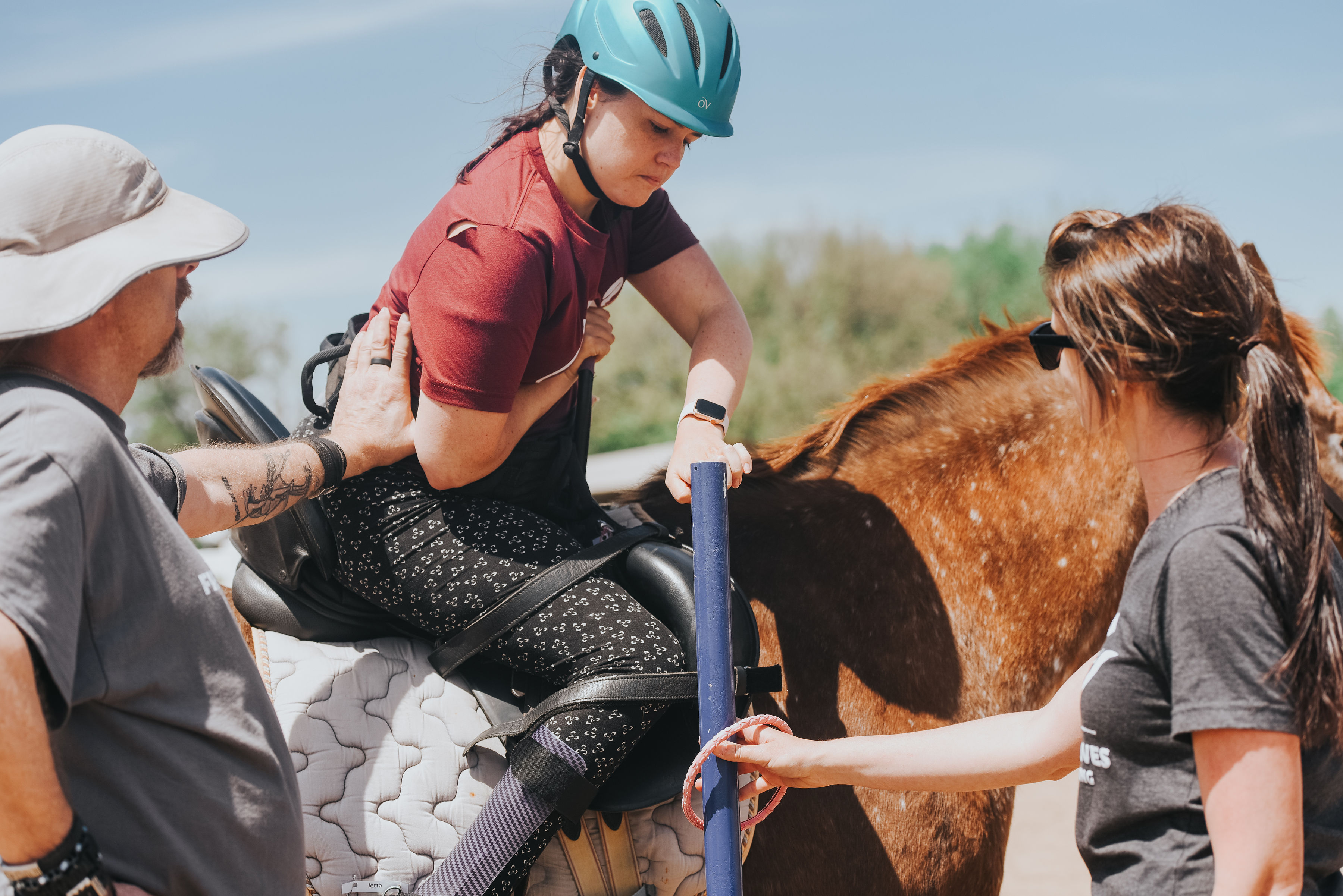
Safety Precautions for Therapeutic Horseback Riding
Assessing rider’s physical and cognitive abilities
Before participating in therapeutic horseback riding, individuals undergo an assessment to evaluate their physical and cognitive abilities. This assessment helps instructors determine the appropriate activities and adaptations needed to ensure a safe and effective riding experience.
Selecting appropriate horses and equipment
Choosing suitable horses and equipment is crucial to the safety and well-being of riders. Therapeutic riding programs take into account the horse’s temperament, size, and movement to match them with riders’ needs. Properly fitting and well-maintained equipment, including specialized adaptive equipment, is also essential for rider safety.
Implementing proper mounting and dismounting techniques
Proper mounting and dismounting techniques are critical to prevent injuries and ensure rider safety. Instructors assist riders in mounting and dismounting the horse correctly, taking into consideration their physical abilities and any necessary modifications.
Supervision and support during riding sessions
Therapeutic horseback riding sessions are supervised by trained professionals who provide continuous support and guidance. Instructors closely monitor riders to ensure their safety, address any challenges or concerns, and make necessary adjustments to the session plan as needed.
Qualifications and Training for Therapeutic Riding Instructors
Certification requirements for therapeutic riding instructors
Therapeutic riding instructors undergo specialized training and certification to ensure they have the knowledge and skills necessary to work with individuals with disabilities. Certification programs, such as those offered by the Professional Association of Therapeutic Horsemanship International (PATH Intl.), provide comprehensive training in equine-assisted therapy techniques and safety protocols.
Educational background and experience
Therapeutic riding instructors often have a background in fields such as therapeutic recreation, physical therapy, occupational therapy, or psychology. This educational foundation, coupled with practical experience working with horses and individuals with disabilities, equips instructors with the necessary expertise to provide effective and safe therapeutic riding sessions.
Duties and responsibilities of therapeutic riding instructors
Therapeutic riding instructors have a diverse range of duties and responsibilities. They design and implement individualized lesson plans, assess riders’ progress, ensure rider safety, provide constructive feedback, and continuously update their knowledge and skills through professional development opportunities. Instructors also play a key role in maintaining the welfare and well-being of therapy horses.
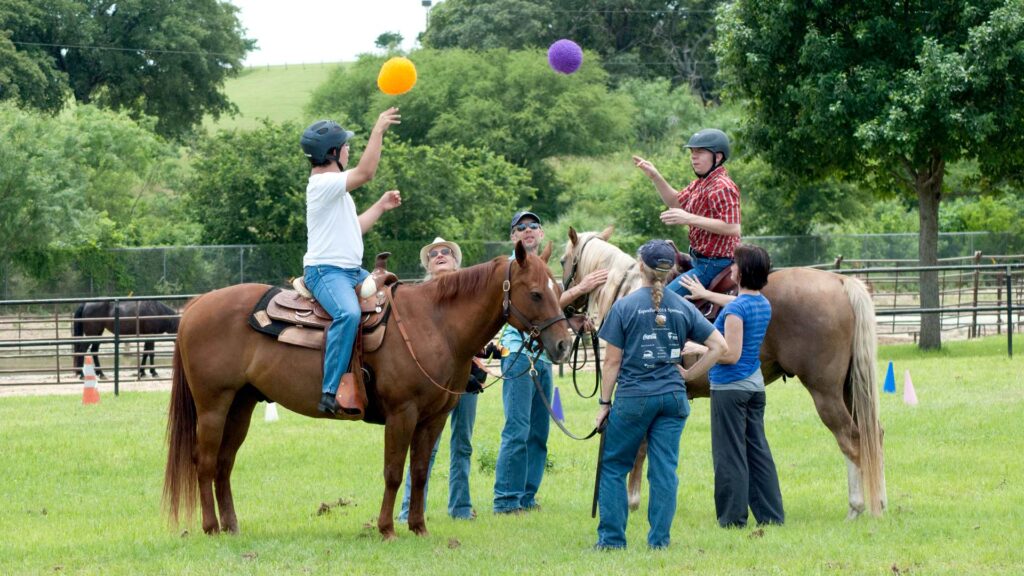
Considerations for Selecting a Therapeutic Horseback Riding Program
Location and facilities
When selecting a therapeutic horseback riding program, it’s important to consider the location and facilities. The program should be easily accessible, with safe and well-maintained facilities, including riding arenas, stables, and adaptive equipment as needed.
Qualified and experienced staff
The program should have qualified and experienced staff, including certified instructors and therapists who specialize in equine-assisted therapy. It’s essential to verify the credentials, experience, and ongoing training of the staff to ensure the highest level of expertise and safety.
Variety of therapeutic approaches offered
A good therapeutic horseback riding program offers a variety of therapeutic approaches to cater to individual needs. Look for programs that provide a range of activities, such as hippotherapy, mounted exercises, and equine-assisted activities, to address physical, emotional, and cognitive challenges effectively.
Client testimonials and reviews
Reading client testimonials and reviews can provide valuable insights into the program’s effectiveness, quality of instruction, and overall experience. Positive reviews and success stories from individuals who have participated in the program can help give you confidence in your decision to choose that particular program.
Success Stories and Testimonials of Therapeutic Horseback Riding
Personal accounts of individuals benefiting from horseback riding therapy
Therapeutic horseback riding has positively impacted the lives of numerous individuals. Personal accounts and success stories reveal the transformative effects of horseback riding therapy, showcasing improved physical abilities, increased confidence, and enhanced overall well-being.
Impacts on physical, emotional, and social well-being
Therapeutic horseback riding has shown significant impacts on physical, emotional, and social well-being. Riders often experience improvements in physical strength, coordination, balance, and flexibility. Furthermore, horseback riding therapy can help individuals build emotional resilience, reduce anxiety and stress, and foster social connections and communication skills.
Inspiring anecdotes of overcoming challenges
Therapeutic horseback riding is a powerful tool for individuals to overcome challenges and realize their potential. Inspiring anecdotes from riders share stories of perseverance, determination, and personal growth. These stories serve as a testament to the transformative power of horseback riding therapy.
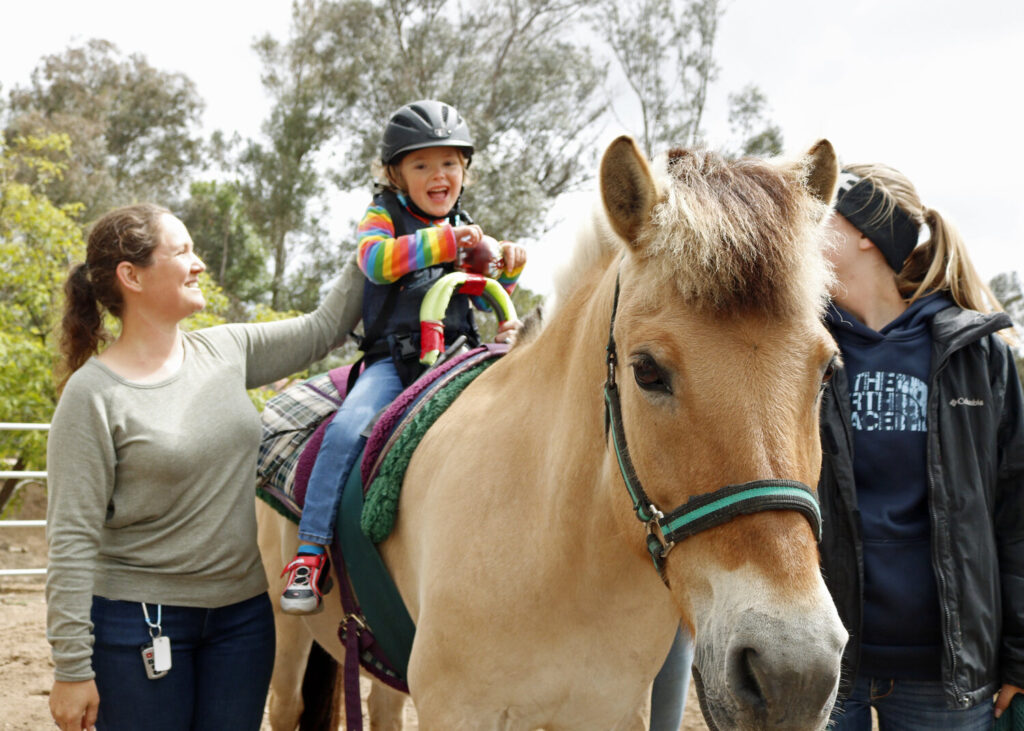
Costs and Funding Options for Therapeutic Horseback Riding
Typical costs of therapeutic riding sessions
The costs of therapeutic horseback riding sessions can vary depending on the program, location, and duration of sessions. Typically, a single session can range from $40 to $100, with package deals or monthly subscriptions available for reduced rates. It’s important to inquire about costs directly with the program of interest.
Insurance coverage for therapy sessions
In some cases, insurance coverage may be available for therapeutic horseback riding sessions. Contacting your health insurance provider and verifying the extent of coverage for equine-assisted therapy is recommended to determine if any expenses can be reimbursed.
Government funding programs
Government funding programs exist in certain countries to support therapeutic horseback riding for individuals with disabilities. These programs may provide financial assistance or grants to cover the costs of therapy sessions. Researching local government programs or contacting disability services can provide information on available funding options.
Non-profit organizations and grants
Non-profit organizations dedicated to supporting individuals with disabilities may offer financial support or scholarships for therapeutic horseback riding. Grants and funding opportunities specifically catered to therapeutic riding programs can help alleviate the costs associated with participating in these valuable sessions.
Research and Studies Supporting the Effectiveness of Therapeutic Horseback Riding
Scientific evidence on the positive outcomes of horseback riding therapy
Scientific research and studies have provided substantial evidence supporting the positive outcomes of therapeutic horseback riding. Research has demonstrated improvements in balance, coordination, strength, flexibility, and emotional well-being among individuals participating in equine-assisted therapy programs.
Studies on specific populations benefiting from therapeutic riding
Research has explored the benefits of therapeutic horseback riding in various populations, including children with autism spectrum disorder, individuals with cerebral palsy, and veterans with physical or mental health challenges. The studies highlight the positive effects of horseback riding therapy on specific populations, reinforcing its efficacy as a therapeutic tool.
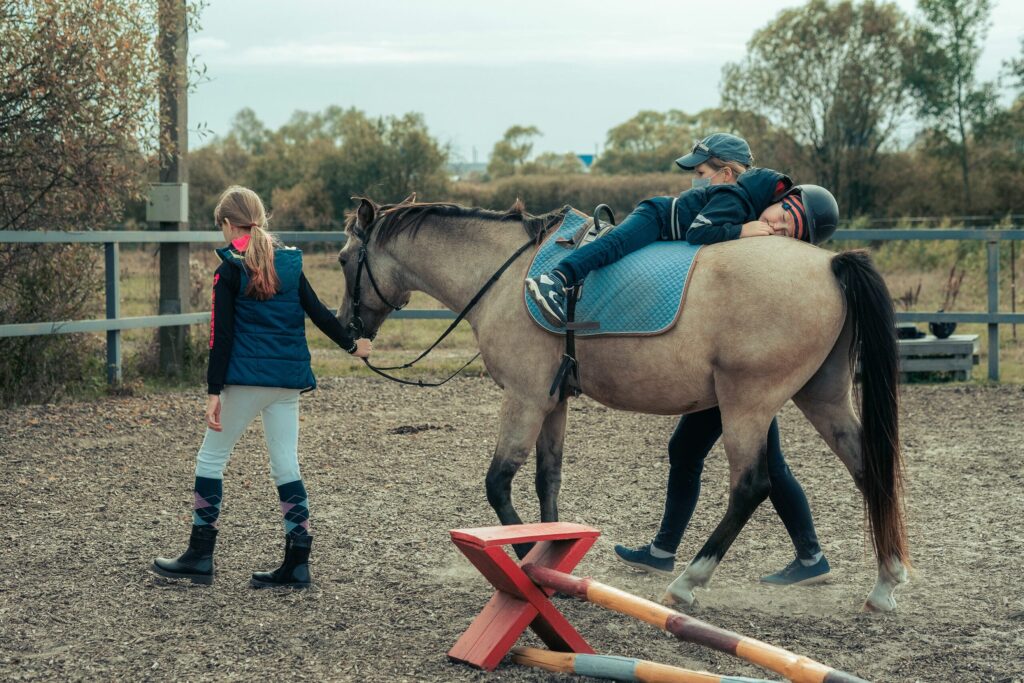
Inclusion and Accessibility in Therapeutic Riding Programs
Adapting riding equipment for individuals with disabilities
Therapeutic horseback riding programs prioritize inclusivity and accessibility by adapting riding equipment to accommodate individuals with disabilities. This includes using specialized saddles, reins, and adaptive equipment tailored to the specific needs and abilities of riders.
Accommodations for different needs and abilities
Therapeutic riding programs address the diverse needs and abilities of individuals with disabilities. They create a safe and supportive environment that can accommodate individuals with physical, emotional, or cognitive challenges. Accommodations such as mounting ramps, sensory-friendly spaces, and visual aids are provided to ensure a positive experience for all participants.
Promoting a welcoming and inclusive environment
Therapeutic horseback riding programs strive to create a welcoming and inclusive environment that celebrates diversity. This includes fostering an atmosphere of respect, understanding, and acceptance for individuals of all abilities, cultures, and backgrounds. Inclusion is not only a goal of therapeutic riding programs but also a foundational principle.
Interaction Between Horses and Humans in Therapeutic Riding
Understanding the horse-human bond
The interaction between horses and humans in therapeutic riding programs is based on the powerful horse-human bond. Horses are intuitive and perceptive animals that have the ability to connect with and respond to human emotions and behavior. This bond forms the foundation for creating a therapeutic and healing environment.
Benefits of the horse’s movement and temperament
The horse’s unique movement, particularly its walking gait, provides a rhythmic and gentle motion that closely mimics human walking. This movement stimulates the rider’s muscles, joints, and sensory systems, offering therapeutic benefits. Furthermore, horses have a calming and non-judgmental temperament, making them ideal therapy animals for individuals with disabilities.
Building trust and emotional connection with the therapy horse
Therapeutic horseback riding sessions focus on developing trust and building an emotional connection between the rider and the therapy horse. Participants learn to communicate effectively with the horse, establish boundaries, and develop a sense of partnership. This emotional bond promotes a sense of security, enhances the therapeutic experience, and fosters personal growth.
Case Studies and Examples of Therapeutic Riding Programs
Description of successful therapeutic riding programs
Several therapeutic riding programs worldwide have achieved remarkable success in improving the lives of individuals with disabilities. These programs utilize innovative approaches, engage highly qualified instructors, and prioritize the well-being of both riders and therapy horses. Case studies highlighting the specific achievements of these programs can inspire and encourage others to explore therapeutic horseback riding.
Unique approaches and innovative techniques used
Therapeutic riding programs often employ unique approaches and innovative techniques tailored to the needs of their participants. These approaches may include incorporating art therapy, mindfulness practices, or specific therapeutic exercises into the horseback riding sessions. Such innovative techniques further enhance the therapeutic benefits and create a more holistic approach to therapy.
Conclusion
Horseback riding for therapeutic purposes offers a wide range of benefits for individuals with disabilities. The physical, psychological, and social advantages of therapeutic horseback riding have been well-documented through research and success stories. With the guidance of qualified instructors and the gentle support of therapy horses, individuals can experience improved physical strength, balance, coordination, self-confidence, and emotional well-being. The bond between humans and horses, coupled with the unique movement of the horse, creates a powerful therapeutic environment that fosters personal growth and development. Therapeutic horseback riding programs provide individuals with disabilities the opportunity to overcome challenges, explore their potential, and enhance their overall quality of life. So, why not saddle up and embark on a transformative journey with therapeutic horseback riding?
